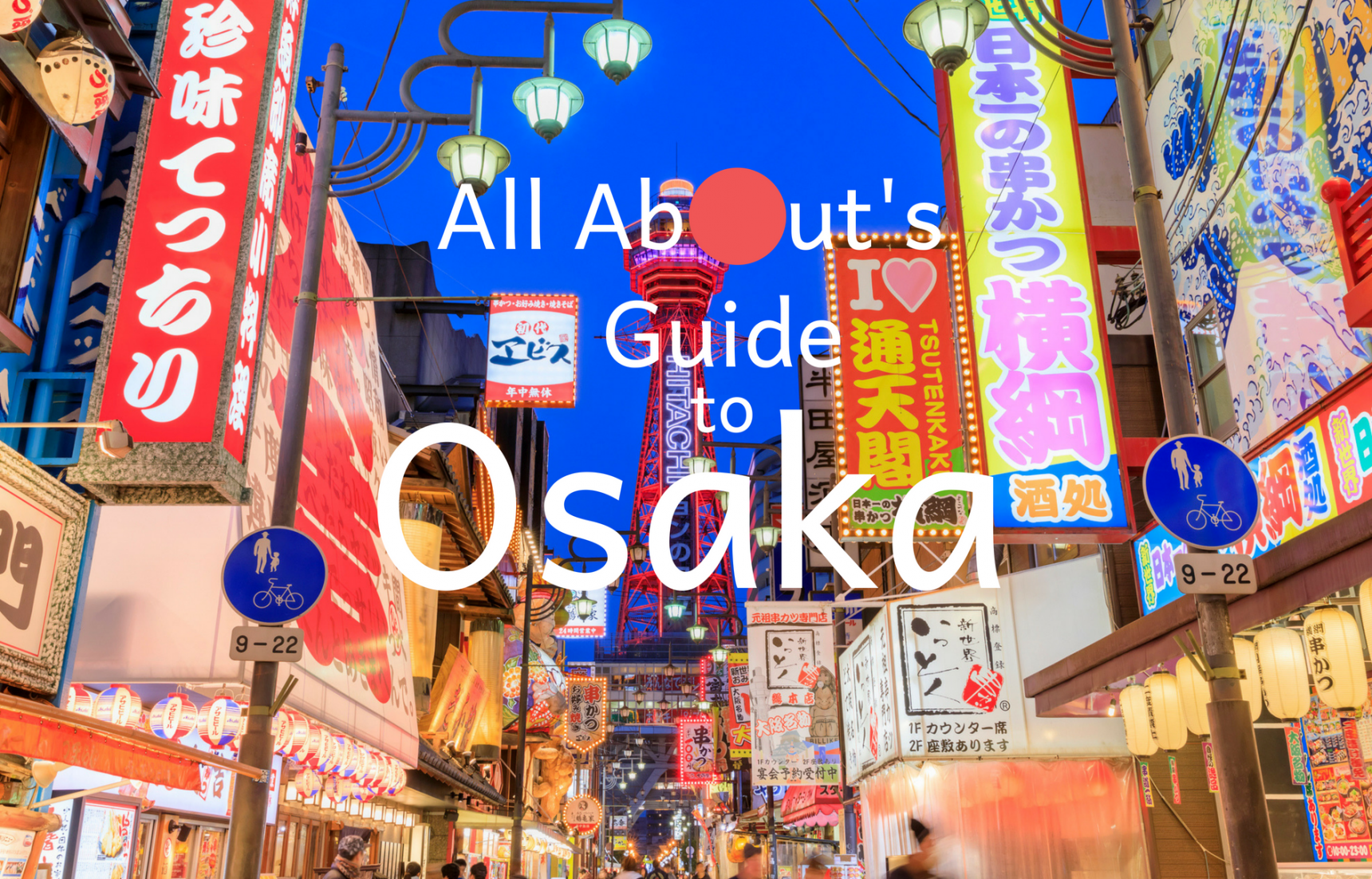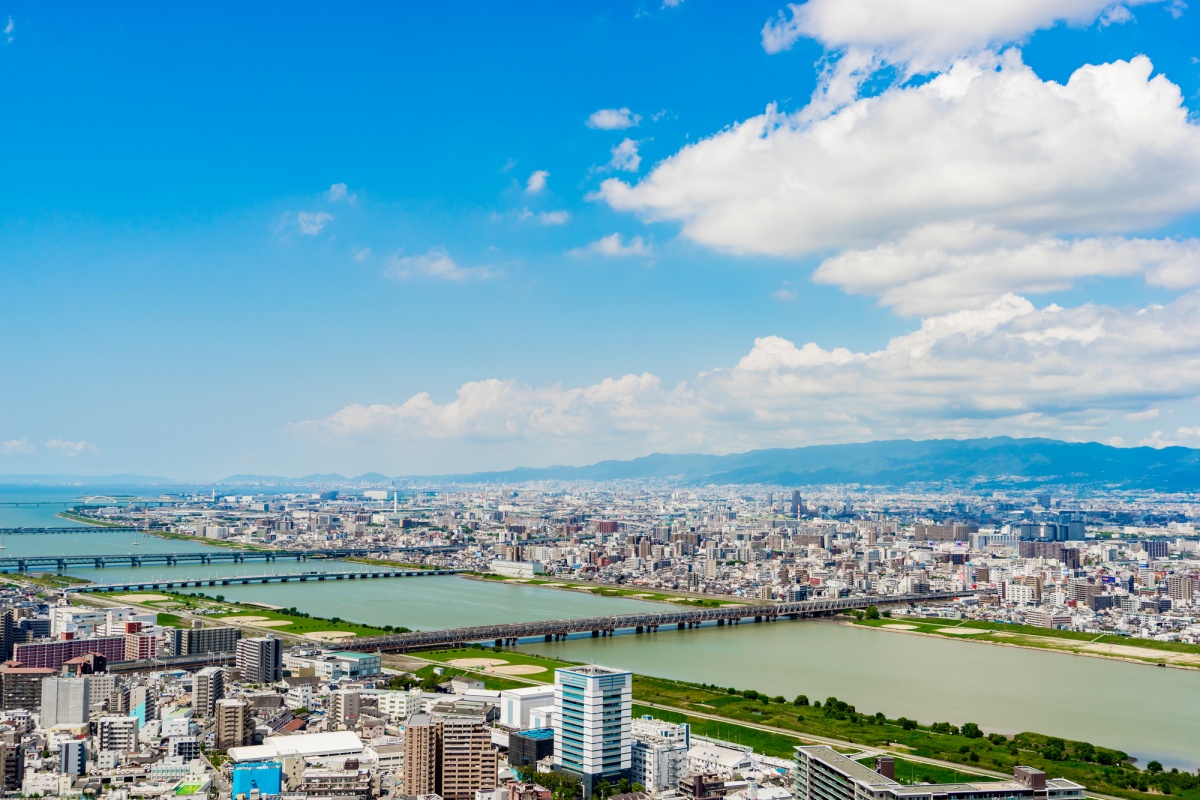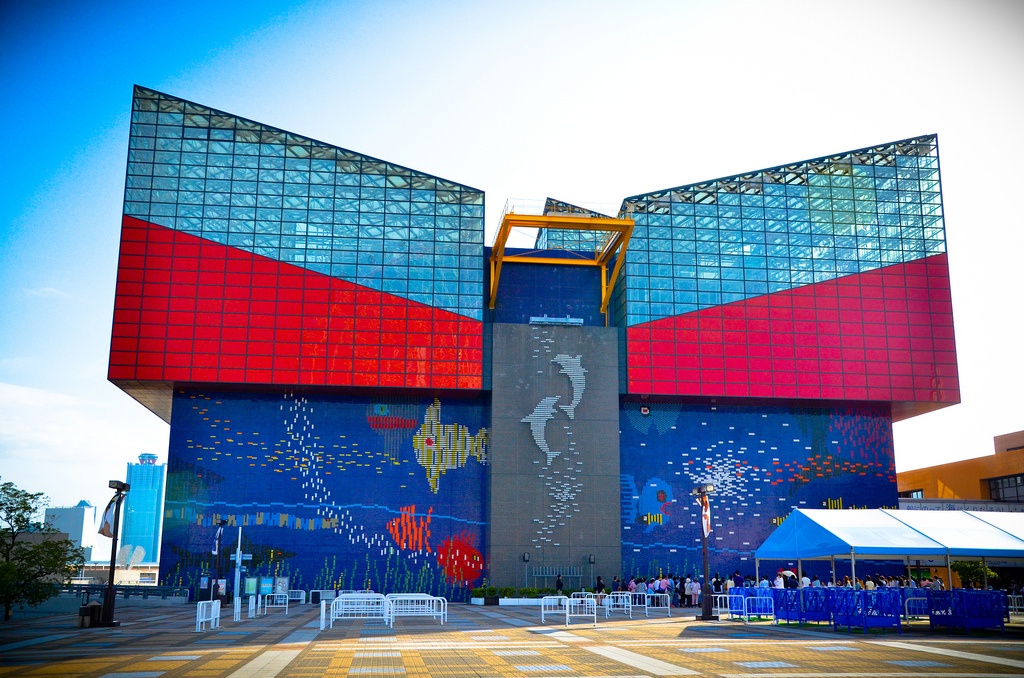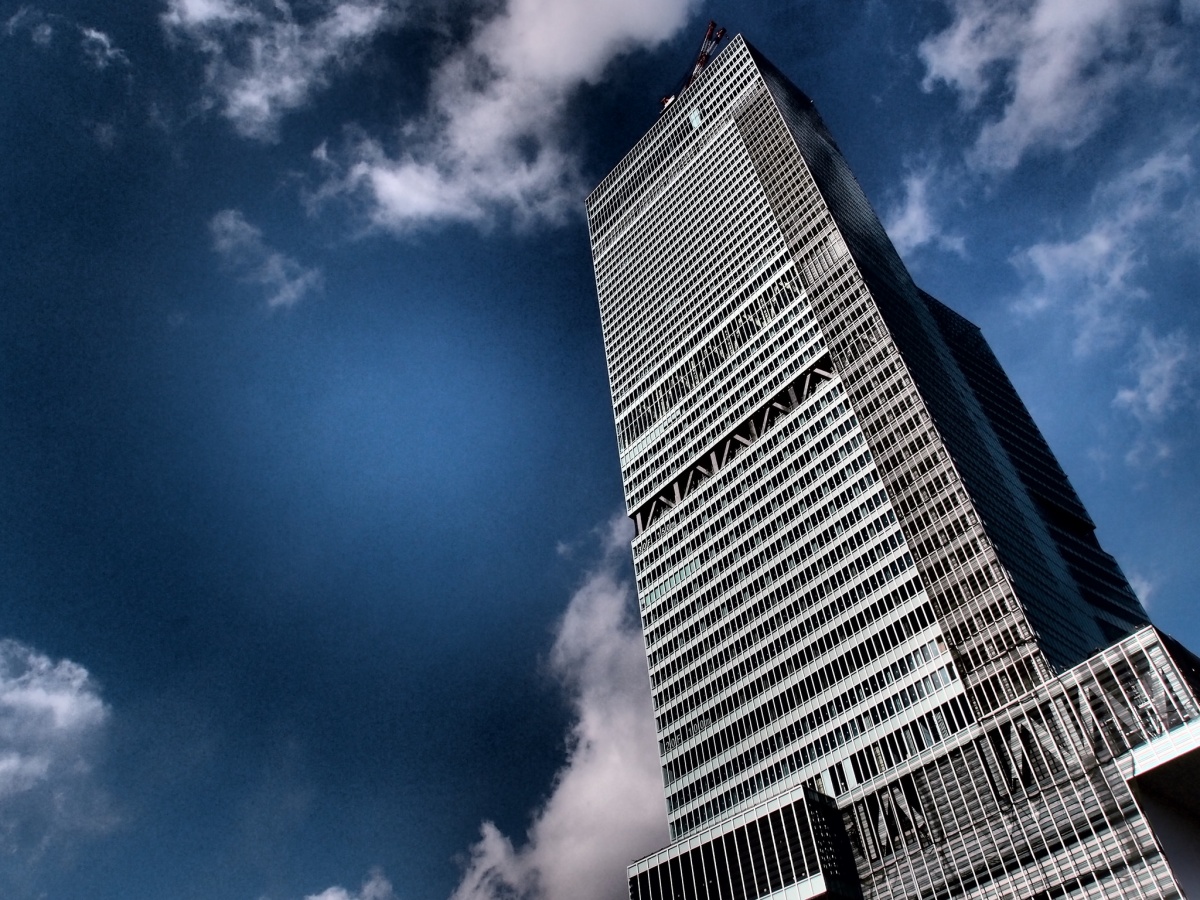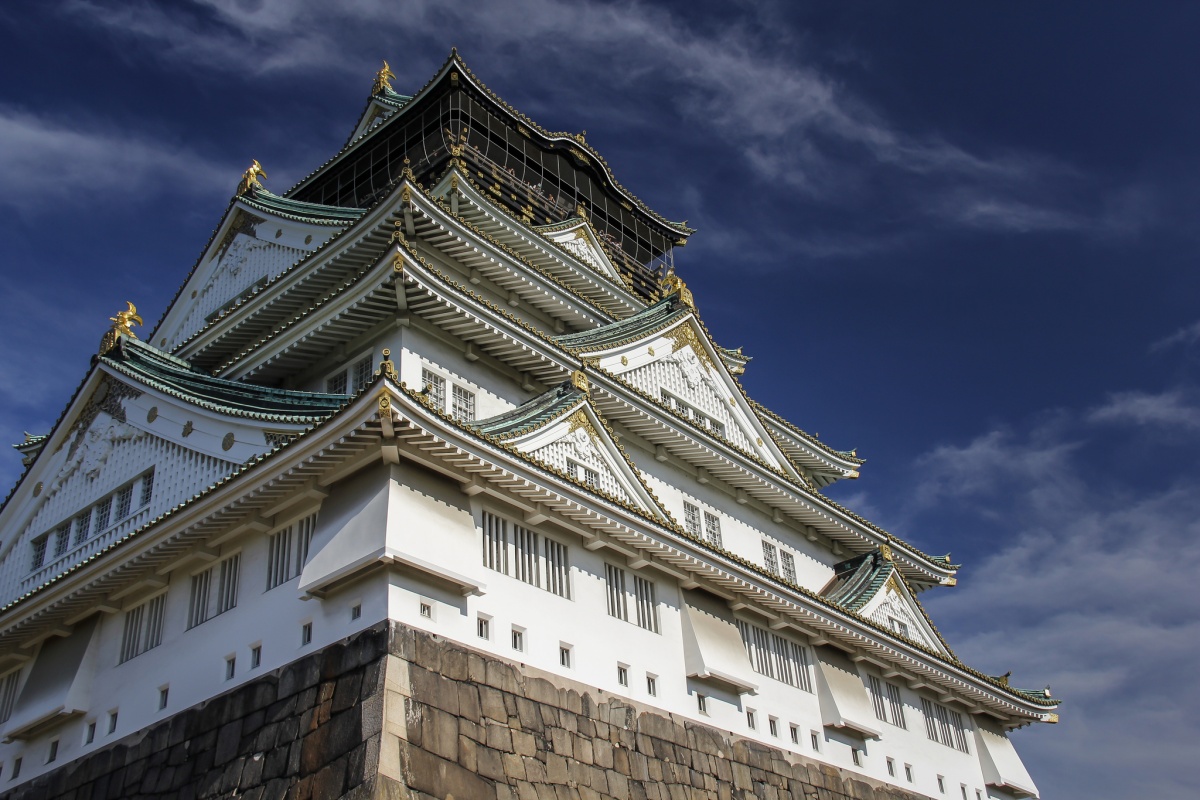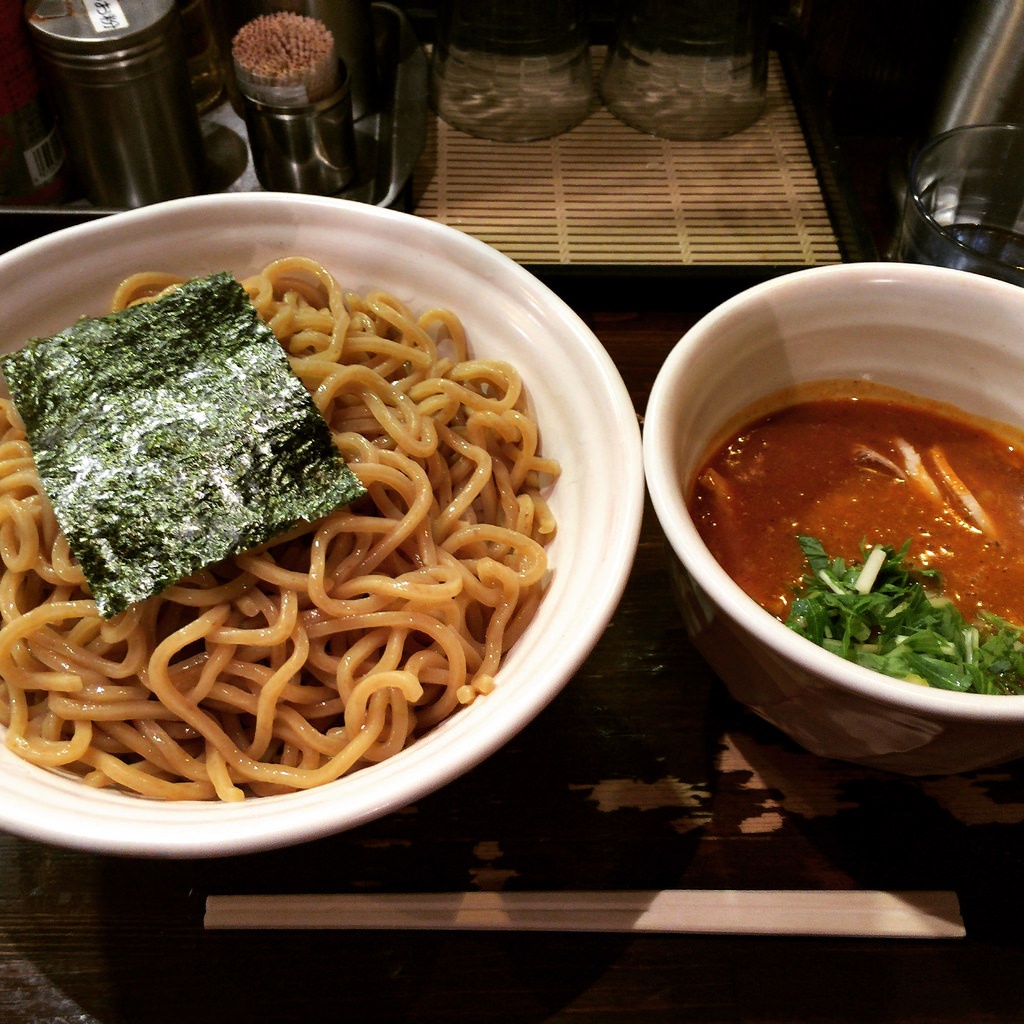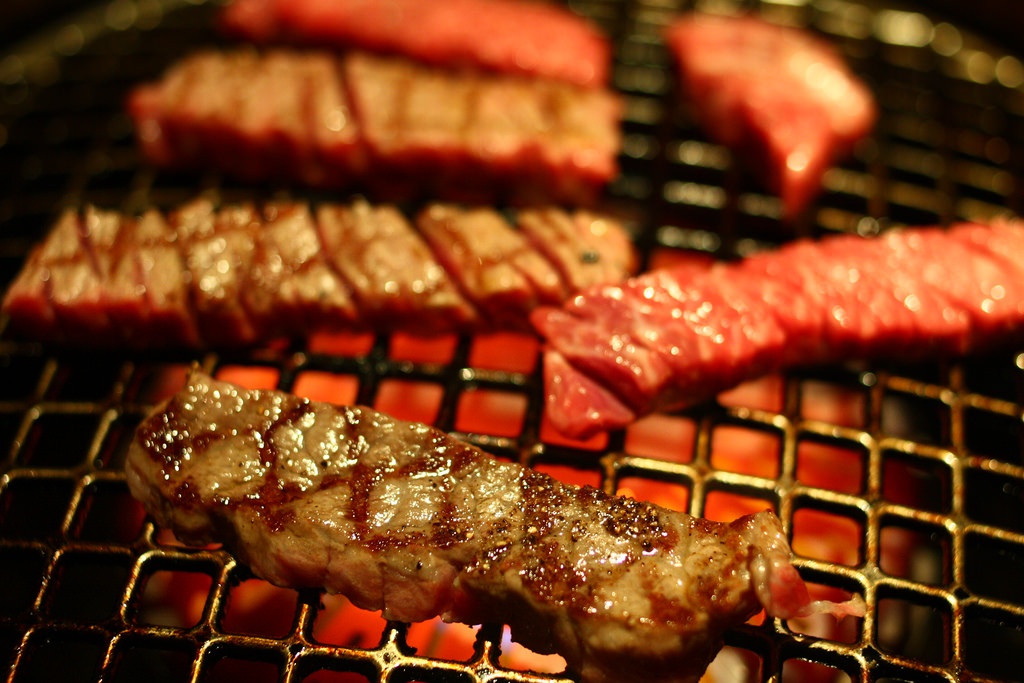All About's Guide to Osaka
Osaka is a famously laid-back Japanese city, one that's charmingly rough around the edges and solid gold in the center. Right in the heart of Kansai, it's the perfect place to stuff yourself with delicious local specialties, shop until you drop in some of the longest arcades in the country, and hop from place to place. Read on to find out more!
By Robert KodamaKey Osaka Facts
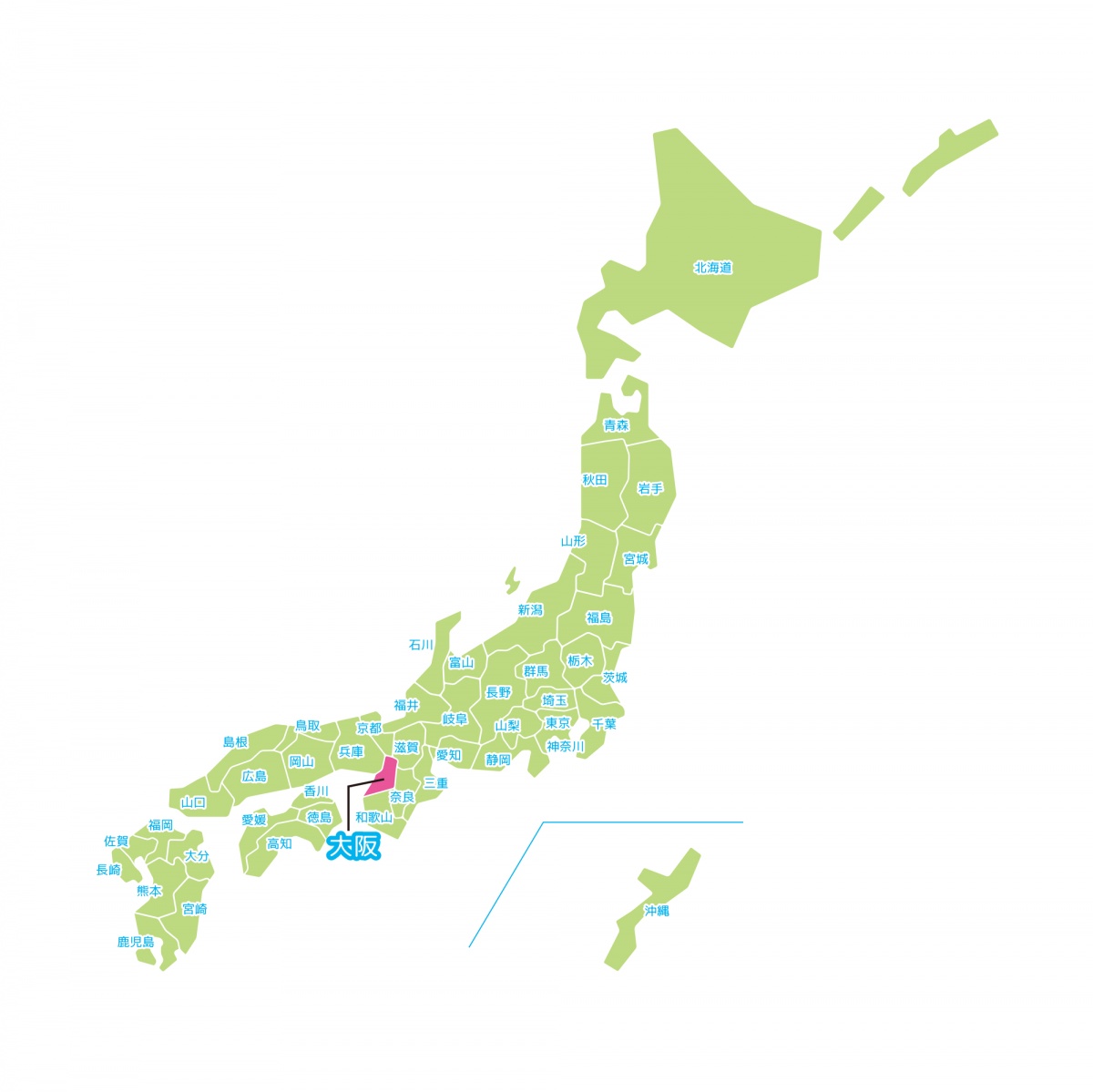
https://pixta.jp
The city of Osaka (大阪市) is the capital of Osaka Prefecture (大阪府), which is located in the Kansai region on Japan's main island, Honshu. Although Osaka is a rather small prefecture in terms of size, it's Japan's third largest city (after Tokyo and Yokohama), with a population of 8.84 million.
Osaka boasts a history of some 1,400 years, and developed as a commercial hub for trade with other Asian countries in the fifth century. It briefly served as the capital of Japan in 645 when Emperor Kotoku moved the capital from Nara. At the time the city was known as Naniwa, and the ruins of the Naniwa-no-Miya Palace can still be visited to this day.
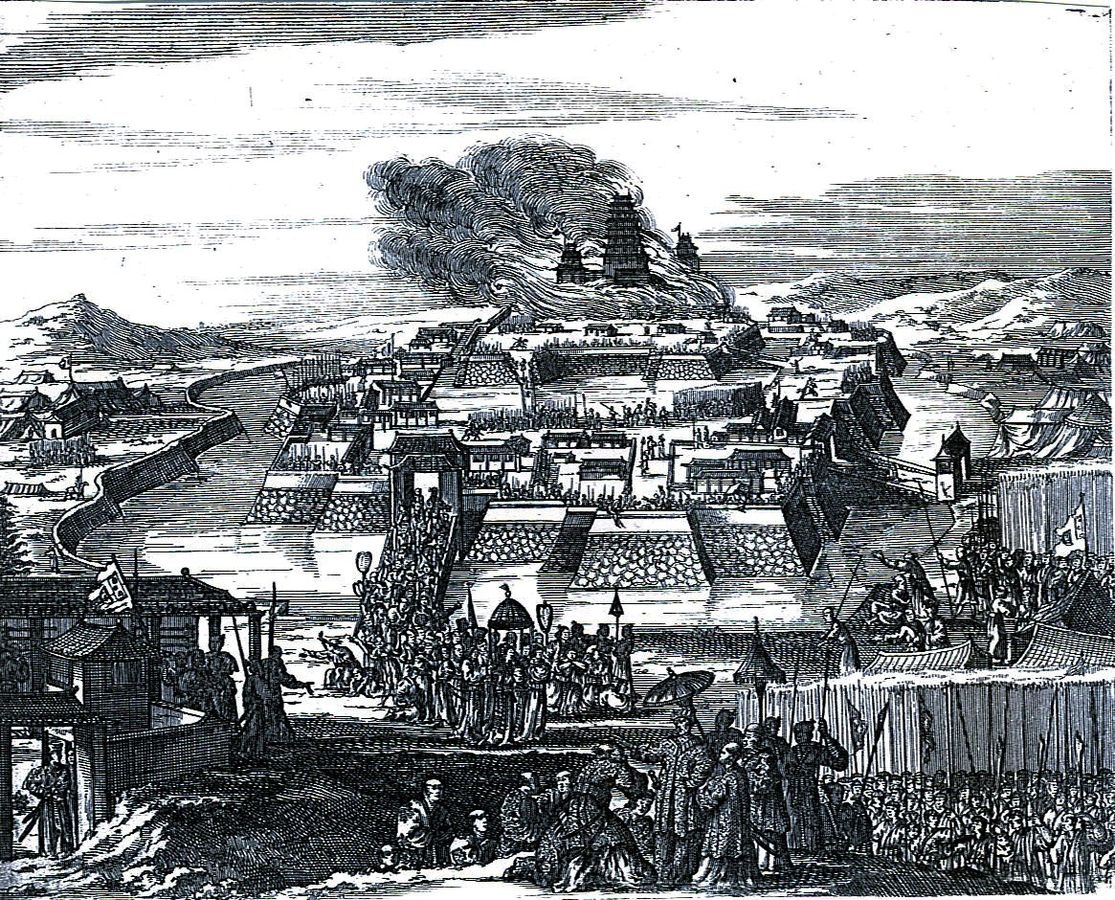
https://en.wikipedia.org/wiki/Siege_of_Osaka
In 1583, the feudal lord Toyotomi Hideyoshi (the second "Unifier of Japan" and successor to the famous Oda Nobunaga) constructed the magnificent Osaka Castle, which he used as his seat of power. After his death, his son Hideyori waged ill-fated war with the shogun, Tokugawa Ieyasu. While the Battle of Sekigahara was the deciding victory that allowed the Tokugawa to establish their shogunate (and with it, to usher in the Edo Period), the Siege of Osaka Castle was an important crossroads in Japanese history. After Hideyori's defeat, the castle and surrounding town were destroyed. It was later rebuilt by Ieyasu's third son, Tokugawa Hidetada.
https://en.wikipedia.org/wiki/Osaka
During the Edo Period (1603 - 1868), Osaka was a crucial shipping region for rice and other agricultural products to the rest of the country. It came to be called the "Kitchen of the Nation" (天下の台所・tenka no daidokoro), a nickname that still persists to this day. During the Meiji Period (1868 - 1912) Osaka industrialized, and earned recognition as a technological hot spot—it was even the first place in Japan to implement a streetcar system! However, this industrialization made it a prime target, and Osaka was devastated by American bombing raids during World War II.
Osaka has come a long way since then, cultivating a reputation as a relaxed and welcoming city. Osaka has many different neighborhood attractions scattered across its 24 wards. The unique culture (including the incredibly distinct regional dialect) is a big part of why it's at the top of many travelers' wish lists—delicious cuisine, vibrant nightlife, an easygoing lifestyle and more await all who visit!
Osaka is an incredibly popular tourist destination, and ranks in the top five most-visited prefectures for international visitors from most countries. It has fairly temperate weather, which means it's a great place to visit any time of year. The most popular times are the autumn months of October and November, when the leaves change colors, and the spring months from March to May, during which time the cherry blossoms bloom. Spring gives way to rainy season, which typically peaks in June and continues throughout July. Summers are quite hot and humid, with an average high of 33 degrees Celsius (nearly 92°F!). Winters are cold but rarely snowy, and the average low in January and February is 3 degrees Celsius (37°F).
Top 5 Osaka Sights
Osaka has many unmissable sights, so much so that a single visit just won't cut it. However, if you're looking for a few to get started, here are some of the best places to get to know this stunning city.
1. Dotonbori
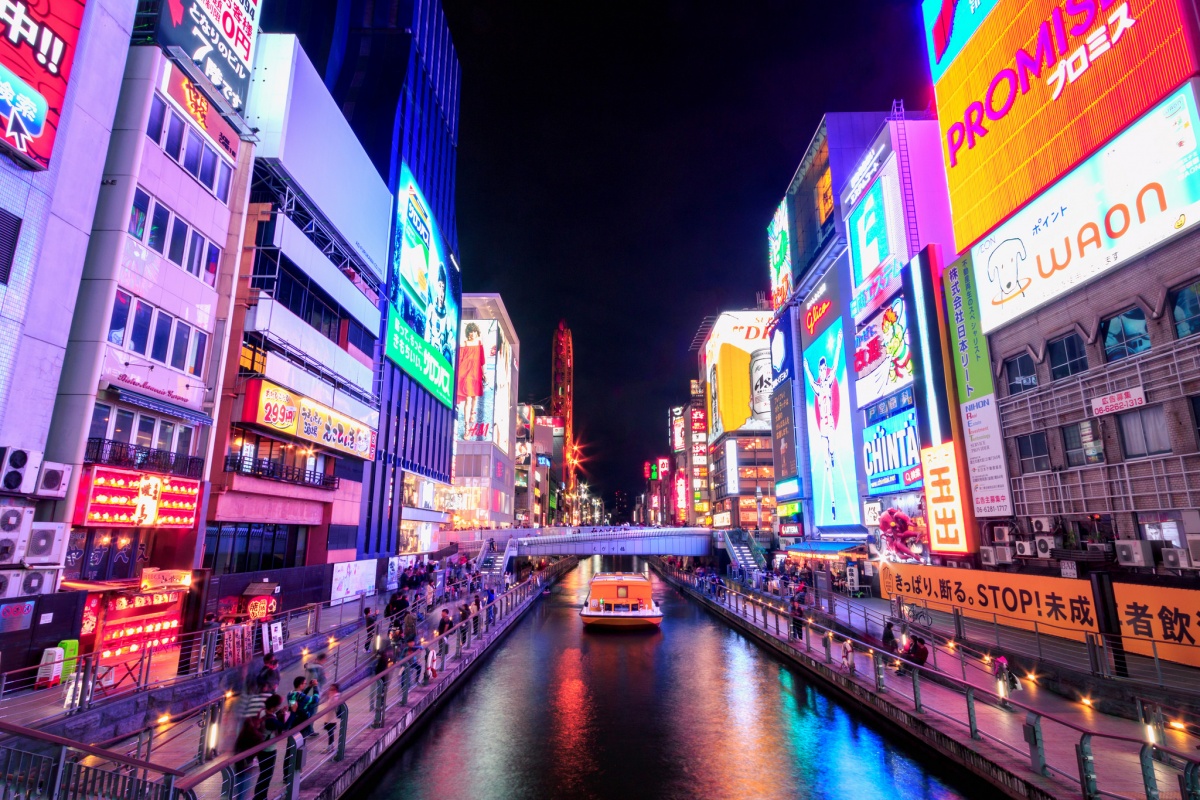
https://flic.kr/p/FatLw9
One of your first stops in Osaka should be Dotonbori, especially at night. The bright lights lining the crowded canal give the area the chilled, downtown vibe for which Osaka is famous. The area used to be home to theaters and other entertainments in Osaka, though most have closed down and been replaced by Osaka's famous food vendors. The best way to sample food is to simply walk down Dotonbori and look out for some of Osaka's local specialities: the gooey, fried octopus balls takoyaki (たこ焼き), rich, savory Japanese pancakes known as okonomiyaki (お好み焼き), fresh, luscious crab (kani・かに) and gyoza dumplings (餃子)! Be sure to snap a shot with the Glico sign right next to Ebisu-bashi, famous for its running man logo which is said to promote the company's original goal of creating healthy sweets for children.
Access: Take the Osaka Metro (Midosuji Line, Sen-nichimae Line, Yotsubashi Line), the JR Nankai Line or the Kintetsu Line to Namba/Osaka-Namba Station and take Exit 14 to reach Dotonbori. As there are many exits at Namba Station, you can alternatively take the nearest exit and head towards the Dotonbori canal.
2. Osaka Aquarium KAIYUKAN
If you love aquariums, then make sure to visit Osaka Aquarium KAIYUKAN. It's one of the largest aquariums in the world, and takes visitors on a journey around the world to explore different bodies of water and the spectacular marine life inhabiting them. One of the highlights is the "Pacific Ocean" exhibit, which is a nine meter tank tank (nearly 30 feet) that spans four floors. Filled with 5,400 tons of water, visitors can catch a glimpse of the enormous whale sharks inside while exploring floors four through eight. Another highlight are the feeding times, where you can watch otters, penguins, dolphins and more as they happily chow down.
Price: Adults (16+) - ¥2,300; (60+) - ¥2,000.
Children (7-15) - ¥1,200; (4-6) - ¥600; (Under 3) - Free Admission
Hours of Operation: 10 a.m. - 8 p.m. (final admissions at 7 p.m.)
Access: Take the Osaka Metro (Chuo Line) to Osakako Station and take Exit 1 or 2. It is a short walk up the main road.
3. Abeno Harukas
Head over to Tennoji to visit Abeno Harukas—a 300-meter-tall (984 feet!) skyscraper that's been crowned as the tallest building in Japan (excluding Tokyo Skytree, which has a broadcast antenna). Take the lift all the way to the top for stunning views of Osaka from the observatory deck, and take it all the way back down for fantastic shopping options in the Kintetsu department store below. As if that isn't enough to keep you occupied, the nearby Q's Mall and MIO Tennoji shopping centers give you plenty of other places to shop 'til you drop.
Price: Adults (18+) - ¥1,500; Junior High/High School Students (12-17) - ¥1,200; Elementary School Students (6-11) - ¥700; Young Children (4-5) - ¥500
Hours of Operation: 9 a.m. - 10 p.m. Open year-round.
Access: Take the Osaka Metro (Midosuji Line or Tanimachi Line), the JR Osaka Loop Line or the Kintetsu Line to Tennoji and follow the signs to "Abeno Harukas."
4. Osaka Castle
As mentioned earlier, Toyotomi Hideyoshi built Osaka Castle in 1583 as the center of power for a unified Japan under Toyotomi rule. Unfortunately for him, the Tokugawa clan put an end to Toyotomi rule and the castle itself after Hideyoshi's death. The current main tower is a reconstruction which now houses a museum dedicated to the castle. It also has an observation deck at the top that offers a lovely view of the grounds and surrounding city. The castle park also makes for a fantastic picnic area (especially during cherry blossom season), as well as a peaceful getaway from the hustle and bustle of the rest of the city.
Price: Adults - ¥600; Under 15 years - Free Admission
Hours of Operation: 9 a.m. - 5 p.m. (last admission at 4:30 p.m.). Closed December 28th through January 1st.
Access: Take the JR Loop Line to Osakajokoen Station and take Exit 3 over the bridge to the castle park.
5. Universal Studios Japan
Also known as USJ, visitors with time in Osaka should head over to one of Japan's most beloved theme parks, Universal Studios Japan. Visit The Wizarding World of Harry Potter World, ride the Jurassic World roller coaster and also meet some of the famous Japanese characters from shows such as Hello Kitty and One Piece. USJ has a reputation for including Japan-only attractions throughout the years, and Nintendo fans should rejoice at their plans to add a Super Nintendo World in the near future! Universal Studios may seem like an attraction from the US, but the inclusion of iconic Japanese pop culture is a highlight that keeps bringing people back. If USJ is top of your list of things to do in Osaka, booking a hotel nearby will allow you to enjoy the park from the moment it opens to close.
Price:
1-DAY PASS: Adults (12+) - ¥7,900; Children (4 - 11) - ¥5,400; Seniors (65+) - ¥7,100
2-DAY PASS: Adults (12+) - ¥13,400; Children (4 - 11) - ¥9,000
Opening Hours: Hours vary depending on season. Please check their website for more details.
Access: Take the JR to Universal City Station and it is a short walk from there.
Off the Beaten Track in Osaka
Osaka may have a lot of well-known spots dotted around town, but the city does have a few surprises to throw at you if you know where you are going! Read on below to find out some of the best hidden gems Osaka has to offer.
Tsuruhashi
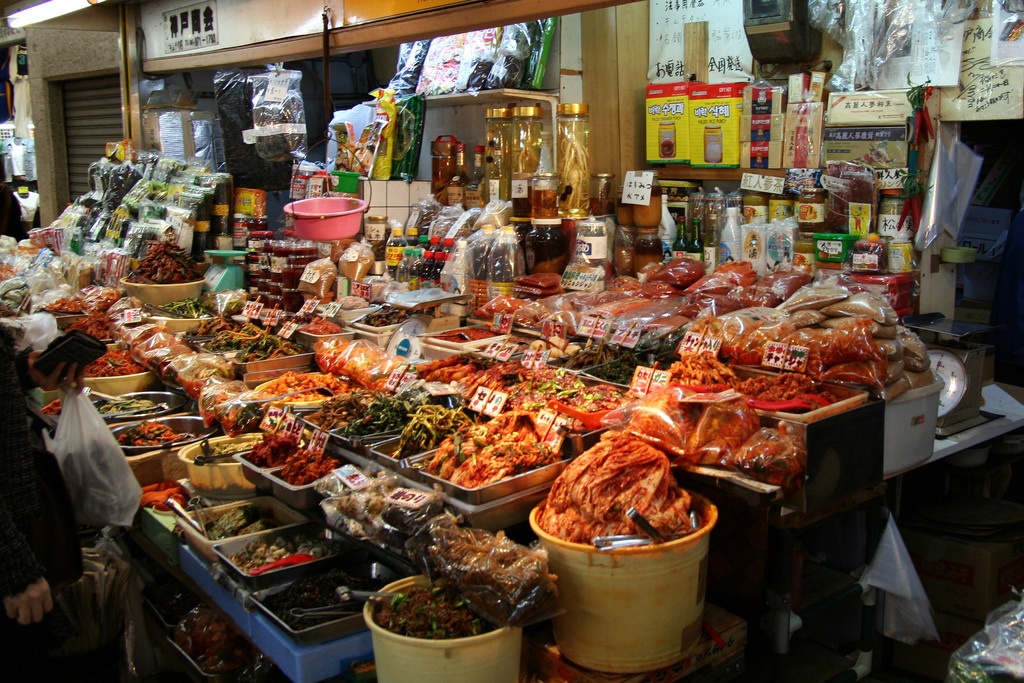
https://flic.kr/p/F9Xx1
Though not strictly Japanese, Tsuruhashi has made its mark on the map in Osaka as being the home to one of the largest zainichi populations in Japan. The term refers to the ethnic Korean people who were displaced from the Korean Peninsula during World War II, and also to Koreans who are born in Japan. Tsuruhashi has a very distinct, communal atmosphere, with a large market full of Korean products and food items, as well as some of the best Korean BBQ and yakiniku restaurants the city has to offer!
Access: Take the JR Loop Line to Tsuruhashi Station.
Tenma
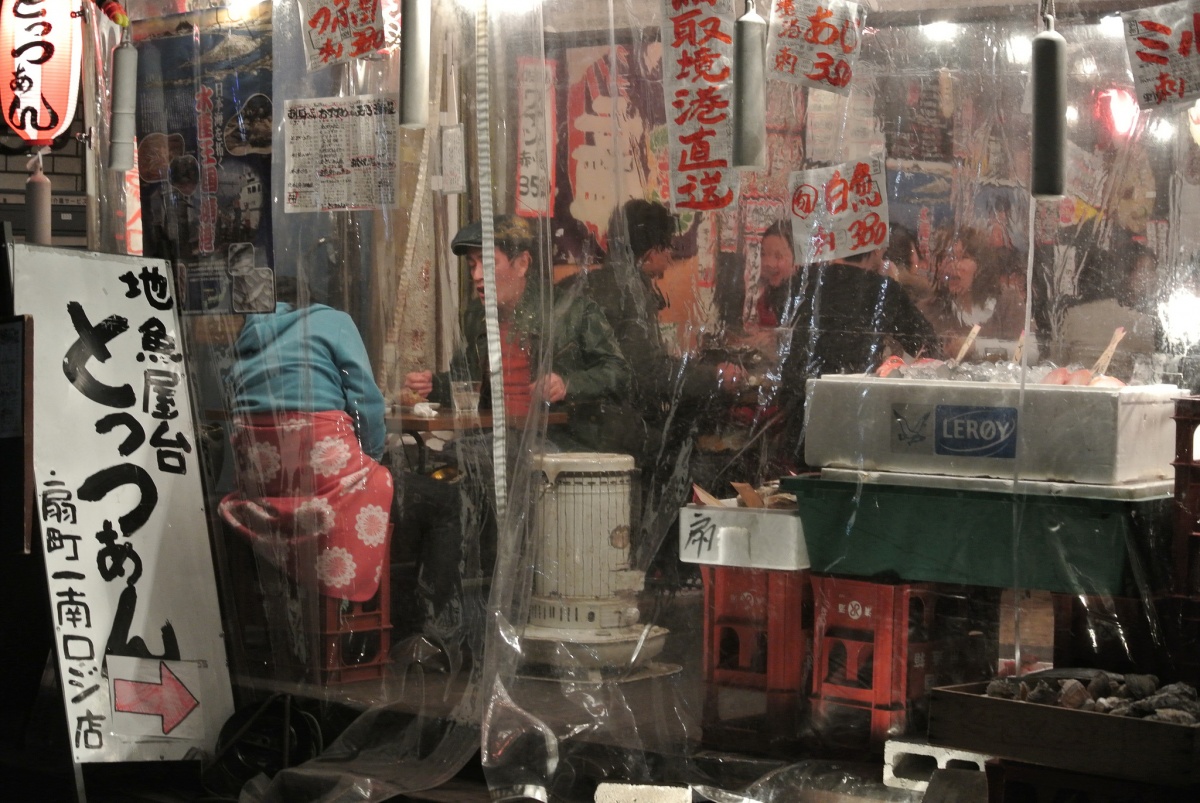
https://flic.kr/p/bzf4V7
Tenma is situated just one stop on the JR Loop Line from Osaka Station and is famous for the abundance of local retail business and eateries. The shopping arcade Tenjinbashisuji (天神橋筋商店街) is also said to be the longest in Japan at just over 2 kilometers long! If you want to mix with the locals at night, the nightlife scene here is buzzing with plenty of small izakaya and wine bars spilling out into the backstreets.
Access: Take the JR Loop Line to Tenma Station.
For more of the off-the-beaten-track places, check out some of the other All About Japan articles below:
15 Spots in Osaka You Have to Visit - Here is a great list of local spots in Osaka you might not find in some of the guidebooks.
Top 5 Theme Parks in Kansai - If you are into theme parks, then Osaka is the perfect place for you! Read this to find out some of the best theme parks in the region. Hirakata Park is a personal favorite!
Top 5 Secret Beaches of Kansai - Osaka might not seem like a beach destination, but there are some excellent locations that can be done as a day trip. A must read for any beach lovers!
Top 5 Must-Eats in Osaka
Osaka is known throughout Japan as an epicenter for food culture and culinary delights. Let's check out some of the best places to sample Osaka's greatest dishes.
1. Daruma
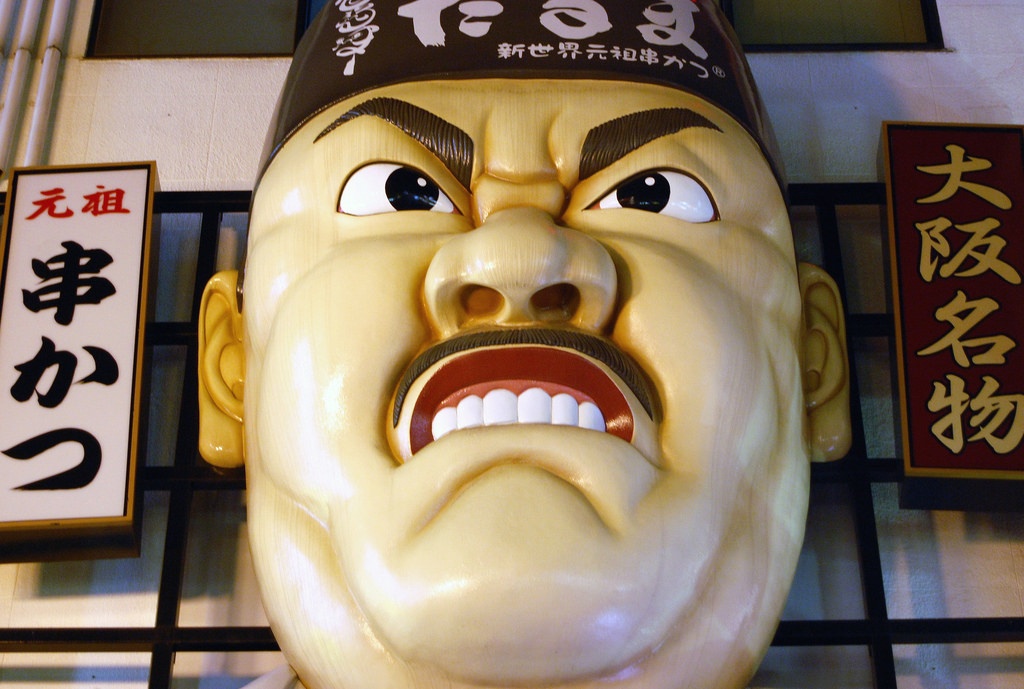
https://flic.kr/p/97iRPA
With a few restaurants located in the Shinsekai (新世界) area of Osaka, Daruma offers great kushi-katsu (串カツ) at reasonable prices (¥100 a stick). Kushi-katsu is an Osaka speciality, where a delicious range of meat, seafood and vegetables are battered and deep fried. The final dish is presented to you on sticks which you dip in a sweet sauce on the table before you eat. Just remember the golden rule: no double dipping!
Access: Take the JR Loop Line to Shin-Imamiya Station and walk towards the Tsutenkaku Tower. There are a few restaurants available around the tower—just look out for the angry mascot in the picture!
2. Takoyaki Stalls in Dotonbori
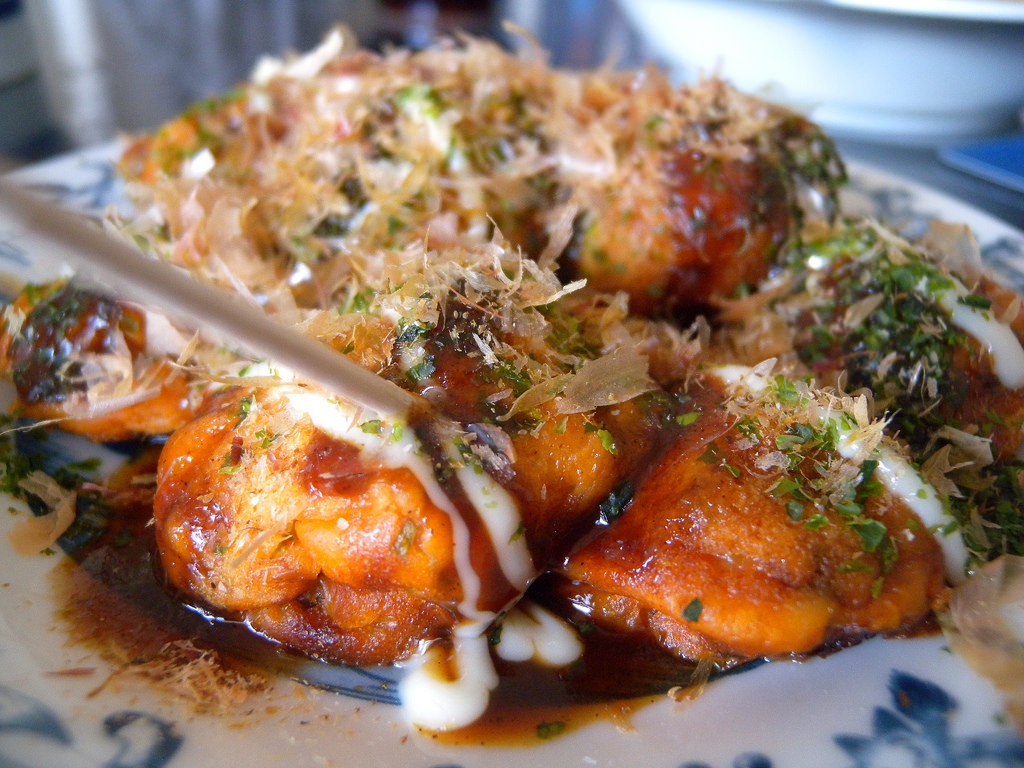
https://flic.kr/p/9ezJSm
Takoyaki (たこ焼き) are ball-shaped snacks made of octopus and other ingredients inside batter, which is then cooked in a special pan. They're considered another local specialty, and there are plenty of stalls down the main stretch of Dotonbori. You can't go wrong with any of them, as they all offer great flavors for low prices. Many vendors will sell a plate of six for around ¥450, which is a steal. If you're new to the dish, go for the classic: six takoyaki smothered in bonito flakes, seaweed, mayonnaise and the special sweet sauce. Just be careful—they're piping hot!
Access: Take the Osaka Metro (Midosuji Line, Sen-nichimae Line or Yotsubashi Line), the JR Loop Line, the Nankai Line or the Kintetsu Line to Namba/Osaka-Namba Station and take Exit 14 to reach Dotonbori. As there are many exits at Namba Station, you can alternatively take the nearest exit and head towards the Dotonbori canal.
3. Okonomiyaki Sakura
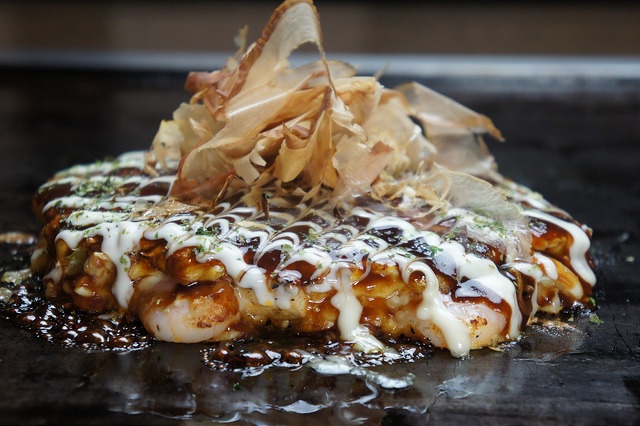
https://flic.kr/p/j5Qzyq
Many describe okonomiyaki (お好み焼き) as a savory pancake, and it sure does look like one. It's a heavenly mixture of batter with various types of meat, seafood and vegetables (whatever you'd like!) topped off with bonito flakes, seaweed, mayonnaise and the sweet sauce for which Osaka is famous. Okonomiyaki Sakura (お好み焼きさくら) is a great local spot located in the restaurant arcade just under the JR train bridge, sandwiched right beside the Hankyu department store. Be prepared for a long wait, as the locals also know about this little gem and pack it out every night. One taste, and you'll be able to weigh in on the great debate over which okonomiyaki is better—Osaka or Hiroshima?
Access: Take the Osaka Metro (Midosuji Line) or the Hanshin/Hankyu lines to Umeda Station. Alternatively, take the JR Loop Line to Osaka Station. Head towards the Hankyu department store and find the restaurant arcade just under the train bridge for the JR lines.
4. Tsukemen at Sanpomen
You may have heard of popular noodle-based dishes such as ramen, udon and soba, but tsukemen (つけ麺) is in a league all on its own. Thick noodles similar to what you might find in ramen are served up with a highly concentrated broth alongside for dipping, which makes a perfect meal in Osaka. Head over to Sanpomen (三豊麺), just opposite the Hankyu Juso Station, for some of the best tsukemen Osaka has to offer!
Access: Take the Hankyu Line to Juso Station and take the West Exit. The restaurant is located on a street corner to the left.
5. Korean BBQ/Yakiniku in Ikuno Korea Town
As mentioned earlier, Osaka is home to one of the largest ethnic Korean populations in Japan. Korean food has had great influence on cuisine throughout the city, especially in relation to yakiniku (焼肉)—meat (usually beef) that you grill up yourself at the table alongside vegetables and side dishes. Head over to Ikuno Korea Town in Tsuruhashi for some of the best yakiniku restaurants in Osaka. Just make sure to look out for the all-you-can-eat establishments such as Minozokumura to really get your money's worth!
How to Get Around Osaka
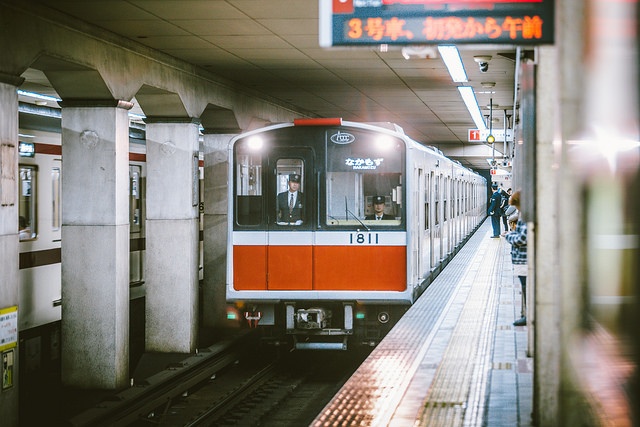
https://flic.kr/p/Jps21v
Osaka is a sprawling, bustling city with tons of personality, and it has a great public transportation system to match!
Osaka Metro
There is a multitude of private railway companies that come in and out of Osaka, but if you're looking to travel within the city limits then the Osaka Metro is the best option. They even offer a one-day pass to get unlimited rides for ¥800 on weekdays (discounted to ¥600 on weekends or national holidays). If you purchase the pass for foreign visitors, you're eligible for discounts across most of the attractions in Osaka as well!
Buses
There is an extensive bus network across Osaka as well, but it can be a little difficult to navigate as there are not many maps or information available in English. However, Google Maps does offer accurate information on timetables and bus stops, which can help you get around a little easier. The aforementioned Metro Pass is also valid on the buses in Osaka, so make the most of your ticket!
Japan Railways
If you're using a JR Pass, you're eligible for unlimited rides on the JR Osaka Loop Line. The loop connects many of the major spots in Osaka, which makes it a great option for saving money while getting around the city.
Taxis
There are taxis aplenty in the city, but we recommend you only use them to get to major locations or your hotel, or as a last resort on late nights when the trains have stopped. They're much more expensive than public transit, so avoid them if you can.
How to Get to Osaka

https://flic.kr/p/djTn8Y
Osaka is well connected to the rest of Japan so getting there is a breeze.
By Plane
Osaka has become a central hub for air travel in Japan, thanks in part to the introduction of Peach Aviation, which is a big hit. Now, Peach has an extensive number of domestic flights that start as low as ¥1,900 one-way, and competitors such as Vanilla Air and Jetstar offer similar prices. It's a fast and affordable way to get to Osaka from other parts of the country, especially if you live in Japan or don't have access to a JR Pass.
By Shinkansen
Shin-Osaka Station is the terminus for the shinkansen, and only a short train ride away from the heart of Osaka. It's connected to Tokyo, Nagoya, Kyoto, Hiroshima and Hakata, which means it's incredibly convenient regardless of where you are. If you have the JR Pass, this is the best option for you, since they include unlimited rides on the bullet trains. Just make sure to avoid the Nozomi and Mizuho trains, since they aren't covered.
For those without a JR Pass, the journey can prove quite expensive. A one-way ticket from Tokyo will cost around ¥15,000 (about US$135) per person!
By Bus
If you're looking to kill two birds with one stone (three birds, if you count saving money on accommodations) then a night bus is the perfect option for you. Willer Express has an extensive network of night buses in and out of Osaka at reasonable prices, and they're fairly comfortable. They also offer passes that can add up to some serious savings if you have the time to travel exclusively by bus.
By Boat
If you are travelling in from Kyushu, then why not spend a night on a ferry and arrive in Osaka refreshed in the morning? Ferry Sunflower provides overnight ferries out of Beppu, which is an onsen town in Kyushu. Journeys start from ¥11,510 (about US$104) one-way.
Osaka Local Tips
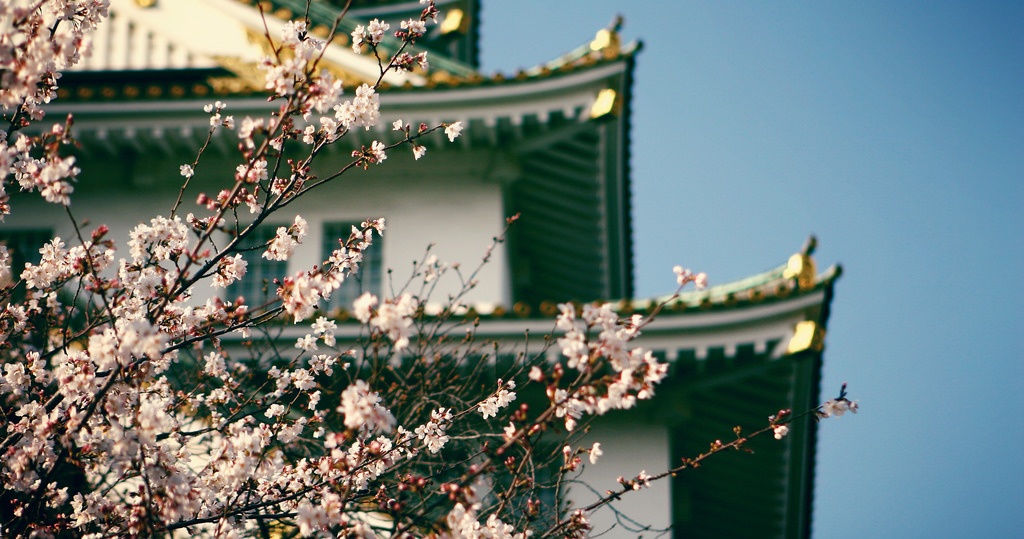
https://flic.kr/p/4JWXvp
The following tips from an Osaka local (yours truly) will help you make the most of your time in Osaka.
1. The atmosphere in Osaka is a lot more casual. You can hear it in the language (people here speak Kansai dialect), you can see it through the behavior of the locals (a lot of jaywalking, more litter, etc.). There's no need to be alarmed by any of this—Osaka prides itself on being more relaxed than places like Tokyo.
2. Following on from the first tip, you might find that people cycle everywhere and anywhere even though it's technically illegal to ride on the pavement. Be aware of cyclists, as they can pop up quite suddenly.
3. Food is the heart and soul of Osaka. If you want to get in touch with the local culture, be sure to try the foods mentioned in this guide.
4. Japan has a reputation as a safe place with relatively low crime. The same is true for Osaka, but there are some areas that have a higher crime rate than average, and might be best to avoid.
5. Use Osaka as a hub to explore the rest of the Kansai region (Kyoto, Nara and Kobe). All three are about 45 minutes from Osaka by public transit, which means it's in a prime location to go explore the rest of the region!


